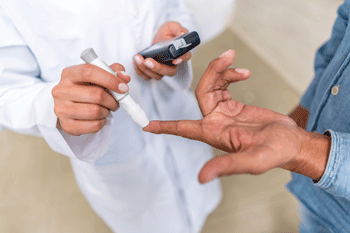 Let’s begin with some statistics from the Centers of Disease Control and Prevention:
Let’s begin with some statistics from the Centers of Disease Control and Prevention:
1. Thirty-four million people in the United States have diabetes.
2. More than 88 million adults in the United States have pre-diabetes.
3. Diabetes is the 7th leading cause of death in United States.
4. In the last 20 years, the number of adult cases of diabetes has more than doubled.
5. Thirty-eight percent of people with diabetes were physically inactive, which means they get less than 10 minutes a week of moderate, vigorous physical activity.
Risk factors for diabetes include:
1. Being overweight. Eighty-nine percent of people diagnosed with diabetes are overweight or suffer from obesity.
2. Being over the age of 45
3. Having a parent, brother or sister with Type 2 diabetes
4. Having gestational diabetes (during pregnancy)
5. Being African-American, Hispanic or Native American
6. Having fatty liver disease
Now that you have the statistics, let’s make it personal. All of the complications from diabetes are preventable, which means that a person should never have to end up on dialysis, lose a foot, have a heart attack, a stroke or go blind, because of their diabetes. It does not have to happen.
The key is to get your blood glucose under control. Getting tight control of your blood glucose goes beyond being compliant with the medications that your medical provider has prescribed. It is also doing your part and monitoring your blood sugar as directed by your provider, as well as making good decisions about what you eat.
This is a disease that has a direct correlation between the sugars/starches that you consume. We all have to make better choices in our diets, consuming more protein and low-carbohydrate vegetables rather than high carbohydrate starches such as rice, potatoes, pasta, corn and bread, all of which breakdown to sugar.
The goal for most females is no more than 30-45 grams/meal of starches and no more than 15-20 grams for snacks. For males no more than 45-60 grams/meal of starches and again no more than 15-20 grams of carbohydrates for snacks. But what does that really mean? Although this is a little over simplified, it means that approximately 1/2 cup serving of most starches are equivalent to 15 grams. We should not consume more than 2-4 1/2 cup serving of starches per meal depending on whether you are a female or male. If you are still hungry with 1/2 cup of these starches, then eat more protein or non-starchy vegetables to get full and do not go back for seconds of rice, potatoes, pasta, corn or bread.
The other important fact is blood sugars go down naturally with exercise. You do not have to have a gym membership or fancy equipment, it can simply be walking. Our bodies are designed to move. Walking briskly for 30 minutes, five days a week will lower your blood sugars naturally as well as provide the added benefit of losing fat which is important with diabetes. The greater the amount of body fat, the more insulin resistant a person becomes, the less the body is able to use its own insulin to lower your blood sugar.
If you are the person who cooks for your family or does the grocery shopping, remember that you have the biggest influence on habits of eating that last throughout one’s life.
Obesity has become an epidemic in our country and we are seeing this more and more in our children. It is not that you can't eat bread, corn, pasta, rice and potatoes with diabetes, but it is learning how much you
should eat.
The high carbohydrate drinks such as sodas and juices, however, are not an option. One can of soda often has more than 45 grams of sugary carbohydrates, which is more than a meal's worth of sugar. It is healthier to get the nutrients from foods rather than to drink sugar with no nutritional value. This is the same for the simple sugar such as snack cakes and other non-healthy snacks.
Lastly, everyone probably knows someone who has had something horrible happen as a result of uncontrolled diabetes. This does not have to be you.
Know that you have control over the outcomes for your diabetes. When you have done your part with your food choices, exercising, checking your feet, and following up for your annual eye exam, your healthcare provider will do the rest with appropriate medications.
Call 1-844-735-8864 for assistance with managing your diabetes with the help of a SeHealth primary care provider who can refer to an endocrinologist or diabetes educator if needed.